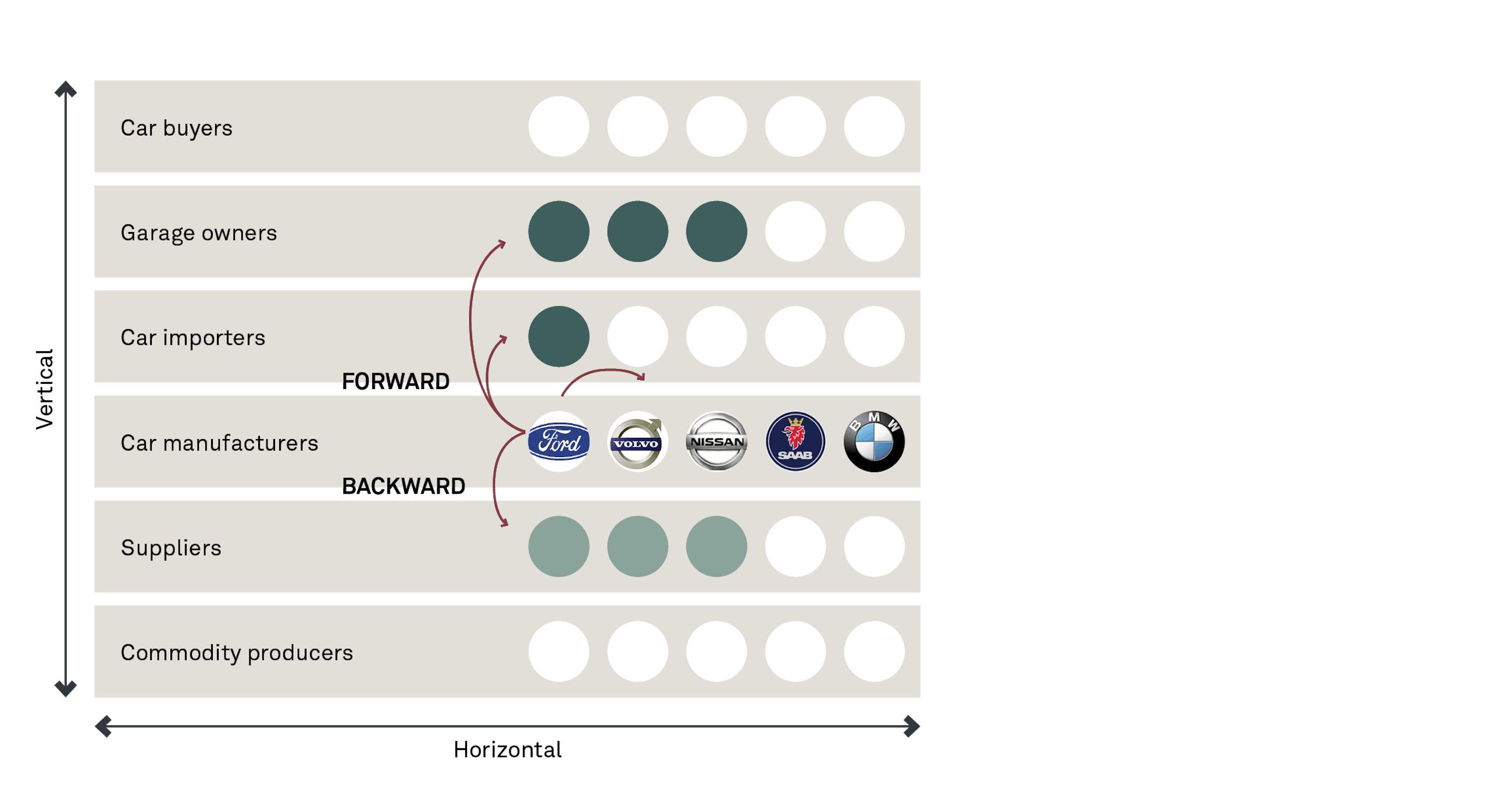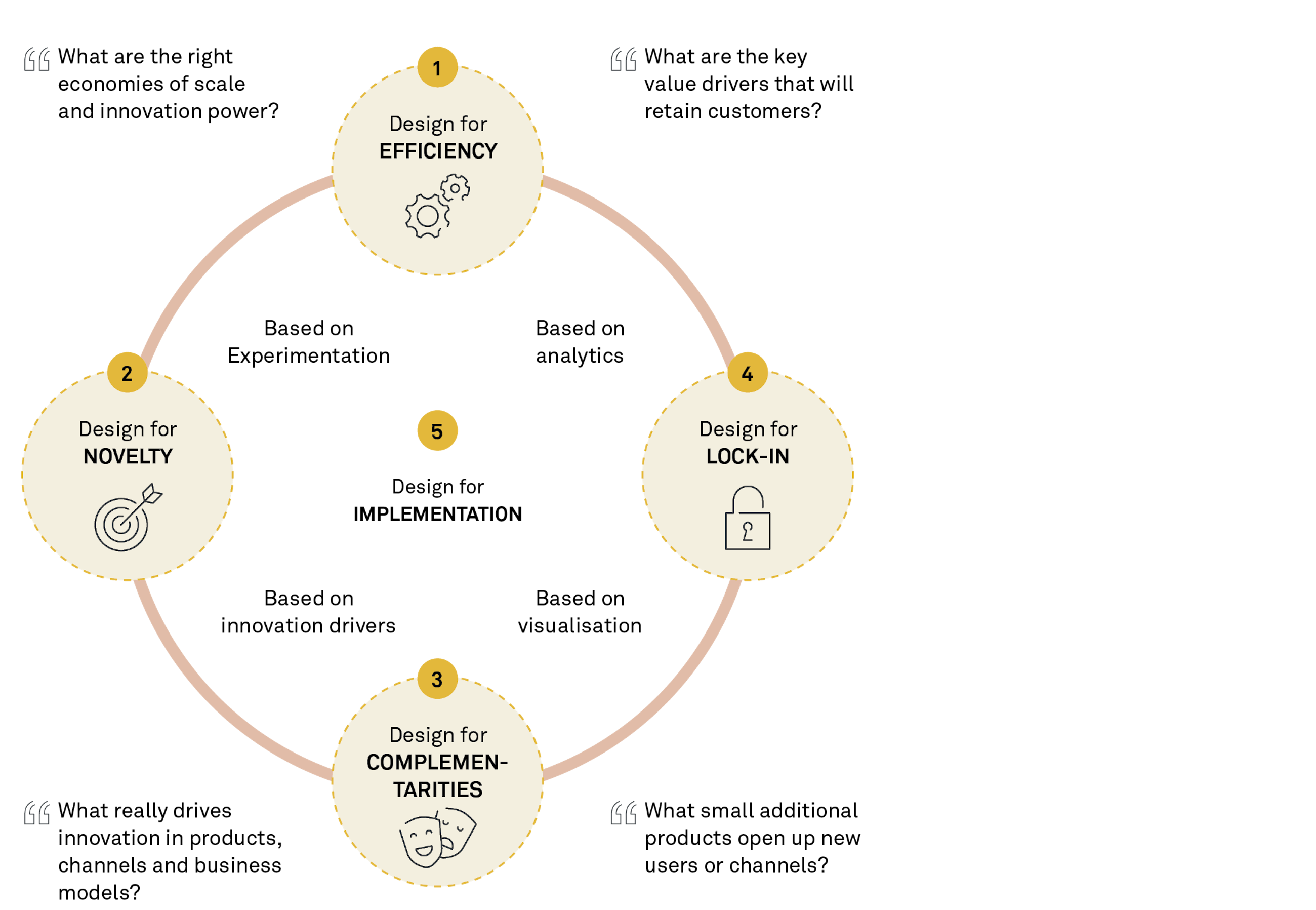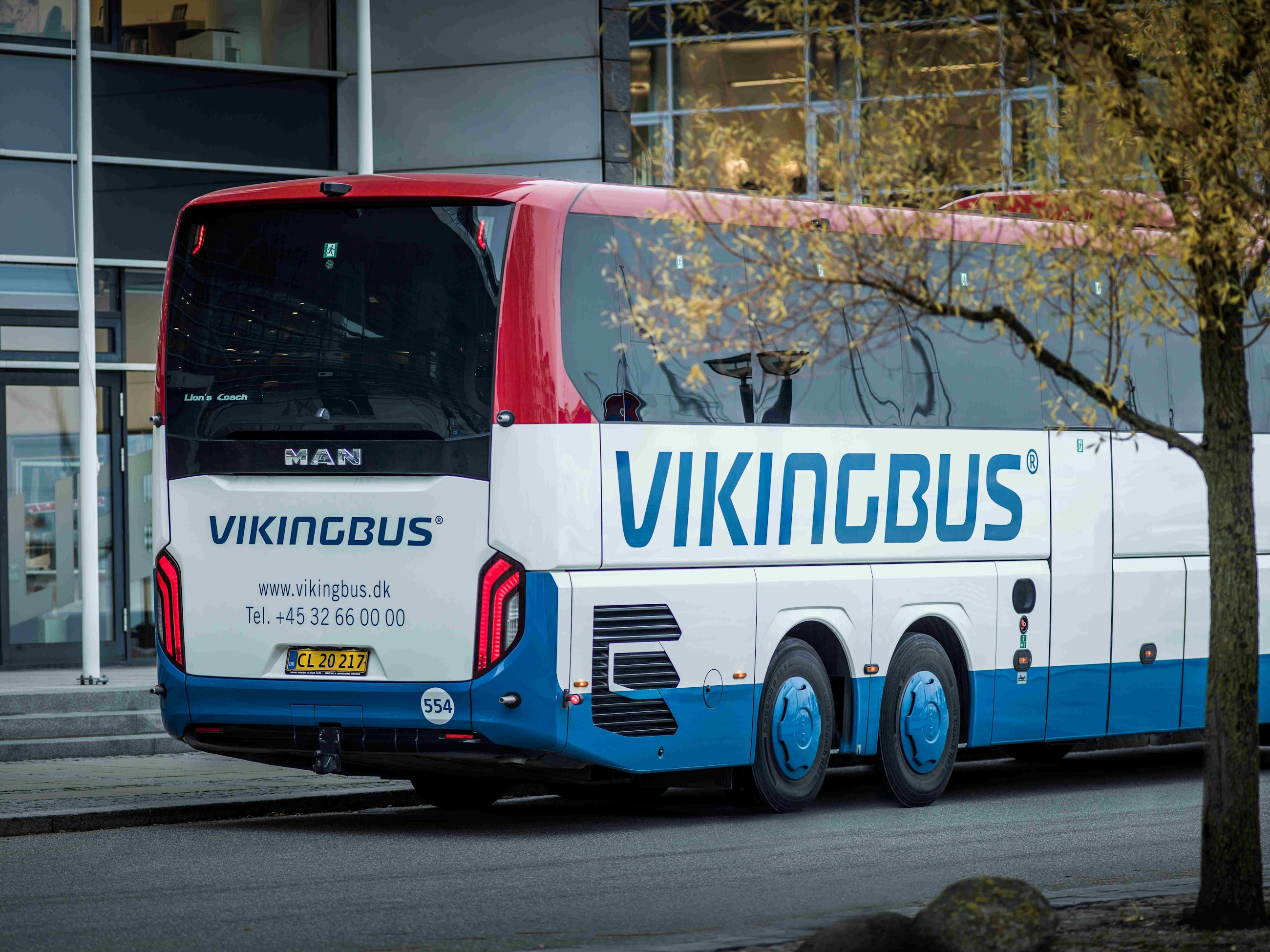Vertical integration has been at the forefront of management thinking since Henry Ford’s fully integrated manufacturing plant in Dearborn. Since the birth of Core Business thinking the discussion has focused on what should be done inside the company and outside by partners and suppliers.
11 November 2015
The text below is an extract – go to the top of this page to download the entire article.
In recent years many organisations have found that while focusing on core business significantly improved alignment, focus and operational efficiency, it limited innovation. Because a leaner organisation has less “things” in its portfolio, it is much harder to innovate outside the box and create new customer value propositions.
Identifying innovation opportunities in the value chain driven by vertical integration
When Oracle bought Sun Microsystems in 2010 it was a bold and brand new move in the industry. No one had expected a software company to move back into hardware. In the past vertical integration moved in the opposite direction with hardware manufacturers acquiring software companies. The reason for this bold move can be summarised in four key points:
- Efficiency. Internal and most importantly the simplification by which customers can buy and use the combined products more easily.
- Novelty. Creating brand new features that were previously not possible with two separate companies.
- Lock-in. Customers will have a harder time switching from Oracle and support fees revenue will be higher.
- Complementarities. More products and services that create opportunities for more add-ons.
Let’s go back to where it all started. Organisations have traditionally pursued acquisitions driven by market share, efficiencies in the value chain or obtaining control of IP rights. Next in line as a driver for acquisitions is innovation. Seeking out the best acquisition targets based on the innovation opportunities can be an enabler of growth. This is not to be confused with traditional innovation within the organisation, which is important in itself. In this article we will be addressing the capability to identify the new combined innovation opportunities that cannot be achieved by each entity alone. We call this Innovate Through Vertical Integration.
Designing strategy and business models was pioneered by Roger Martin in his book The Design of Business. We have in our work identified four design areas as enablers in uncovering opportunities for innovation in the value chain. Carefully designing the implementation phase ties the four design areas together and lets the effect be realised.
Innovation through vertical integration is guided through the 4+1 design areas:
- Design for efficience
- Design for novelty
- Design for lock-in
- Design for complementarities and
- Design for implementation
"It’s back to the future – from disintegration to integration" Larry Ellison, CEO and President of Oracle, said after they acquired Sun Microsystems However, identifying and implementing vertical integration translated into innovation is not easy.
However, identifying and implementing vertical integration translated into innovation is not easy. There are a number of challenges when embarking on such an exercise.
Where to start depending on your area of interest
Further operational efficiencies within current organisational boundaries are limited
Vertical integration enables new levels of innovative efficiencies through improved control of the value chain. Start with Design for Efficiency.
Current transactional structure and go-to-market channels are cemented by value-chain composition
Combining existing parts of a value chain through vertical integration spurs innovation in the structure of transactions and the way channels are constructed. Start with Design for Novelty.
Loyalty and trust are cornerstones in today’s competitive markets
Enabling increased switching costs and lock-in through flexible value chain design are realised with vertical integration. Start with Design for Lock-in.
Leveraging product offerings with additional value-added products increases overall value and bottom line
Vertical integration drives development towards more complementarities in actual offerings as well as in channels. Start with Design for Complementarities.
Case
Innovation through vertical integration
Many organisations have approached vertical integration from the standpoint of internal efficiencies. That was the underlying driver behind Ford’s fully integrated manufacturing process at the start of the 20th century.
Today most organisations pursue vertical integration from control, risk and flexibility standpoints. Control of resources, limiting or taking risks and flexibly changing direction quickly without the burden of commitments.
Let’s look at how Oracle, the number one business, middleware and database software vendor, acquired Sun, a maker of computer servers, storage and networking equipment.
Sun would not have been a traditional acquisition target for Oracle. There are no synergies in terms of products, support or logistics. However, Oracle saw other synergies. A combination of the two companies would enable innovation in both hardware and the database and business software, all critical components in the customer’s IT environment.
These innovations led to improving performance and most importantly, simplified their customers’ everyday lives by offering complete solutions. Before the acquisition, Oracle and Sun customers had to create most of the value themselves by combining products and services from the two companies. The trend in the industry is to create large, one-stop shops for software, hardware and services.
IBM, HP, Fujitsu and others tried to do so with varying degrees of success. None of them used their integrated organisations to spur innovation in wider areas spanning multiple domains. Oracle’s strategy reflects a significant shift away from niche, ‘best-of-breed’ players toward integrated giants.
"Oracle is no longer a software company. It’s an integrated it company. It is maturing. It’s no longer about ‘best-of-breed’ point-products, or owning just one ‘category’. Oracle now has a full-spectrum offer: servers, storage, networking, software, and services."
But the Sun buyout does more than give Oracle a stock boost. It brings Oracle’s integration strategy to a bold, new level. How so? It gives customers access to more powerful integrated hardware and software stacks removing most of the obstacles when putting the solutions together.
Vertical integration is the degree to which a company owns its upstream suppliers and its downstream buyers. Vertical integration is typified by one company engaged in different parts of production (e.g. growing raw materials, manufacturing, transport, marketing, and/or retailing).
A company exhibits backward vertical integration when it controls subsidiaries that produce some of the inputs used in the production of its products. For example, an automobile company may own a tyre company, a glass company, and a metal company. Control of these three subsidiaries is intended to create a stable supply of inputs and ensure consistent quality in their final product. It was the main business approach of Ford and other car manufacturers in the 1920s, who sought to minimise costs by centralising the production of cars and car parts.
A company tends toward forward vertical integration when it controls distribution centres and retailers where its products are sold.
Removing cumbersome activities increases value for the customer and gives Oracle control of the value gained. Oracle will also be able to further enhance performance and quality by controlling the stack and improving total-cost-of-ownership.
The move by Oracle towards deeper vertical integration has enabled them to reap benefits in the four design areas:
Design for efficiency
Oracle’s customers have three main challenges when it comes to operating their servers and database software. These are: putting it all together; fast execution; resolve times in connection with issues.
By integrating vertically Oracle is able to speed up innovation in all of these areas. Complete end-to-end solutions or appliances give customers a one-stop-shop. Improvements in chip design and software utilising servers create better execution. End-to-end management tools shorten time-to-repair.
Design for novelty
Understanding what drives novelty for Oracle’s customers and business partners enables the desired innovation. This applies not just to products but also to channels and business models. As we have discussed previously, innovating new levels of performance and simplification for their customers was one aspect.
Another aspect was enabling partners to offer new channels to access an entire product stack and support to simplify them, removing complexities in dealing with two very important partners. From a customer and partner perspective the introduction of appliances changed the way they purchased and used Oracle products. From per CPU to actual usage.
Design for lock-in
Integrating Sun’s hardware with Oracle’s software, optimising all the components of the technology stack to work perfectly together, will also give companies advantages in performance and reliability. Oracle gives them the simplicity and reliability of an integrated system. Oracle’s strategy reflects a significant shift away from niche, ‘best-of-breed’ players toward integrated giants. That means ‘best-of-breed’ server, storage and networking vendors are going to have to fight for the leftover non-integrated sales. With Oracle’s purchase of Sun, customers feel more secure about the long-term viability of the systems and see how Oracle integrates both hardware and operating system to ensure greater end-user reliability and back-end scalability.
Design for complementarities
When Oracle set out to acquire Sun it had its partners and service and support business in mind. Through the combination of the two organisations they could address existing partners and recruit new ones. It was not so much about new products as it was about increased value for the partners, being able to sell and work with a complete stack of hardware and software. New business models were enabled where partners sold pre-integrated appliances and higher value services instead of pure integration as previously. Utility computing was made available to partners where they paid only for the actual usage, not the physical.
Design for implementation
Acquiring a large organisation such as Sun and integrating it requires courage, determination and timing. We have seen that it is necessary to manage and balance five areas in order to succeed with a transformation project. We will now look at how Oracle addressed the five areas: Importance, Authenticity, People, Effect and Energy.
Oracle created Importance among its employees by highlighting the opportunities for performance improvements and simplifications for the end customer. With Sun it showed how the two companies had worked together for many years creating excellent results. That will now continue in the merged company but with more opportunities for innovation and excellence.
Being authentic and true towards established values and culture creates trust and Authenticity. Oracle’s values are a combination of sales and innovation. The acquisition of Sun was based on a drive to create new innovation opportunities. It was equally fuelled by the possibility to grow sales and improve both Oracle as well as the former Sun. Getting the right People in place and the wrong people removed is important to achieve early success. It is equally important to create a mix of different people to solve the challenges ahead.
When Oracle designed the acquisition it set a goal to achieve USD 1.5 billion in increased operating returns. This Effect is achieved through a combination of increased internal efficiencies, back-office cost-cuts and a changed business mix towards higher valued products. Both Oracle and the investor community closely follow the results.
The most difficult issue in such a complex merger is to keep Energy high throughout the entire process. The motivation for engineering and product management to achieve new innovations served as a positive momentum internally. When integrating the rest of the organisation, it was important to find successful organisations to connect to.
Being part of the successful Oracle sales organisation opened up new possibilities to succeed. Two wrongs do not make one right so finding successful entities to foster success within the acquired parts is key to creating and maintaining energy.
The text above is an extract – go to the top of this page to download the entire article.






